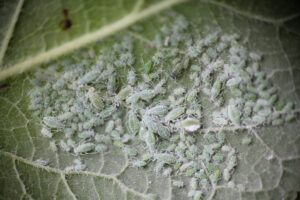
Introduction to Mealybugs
Learn how to get rid of mealy bugs. Mealybugs are small, soft-bodied insects known for their cotton-like white appearance that cluster in large numbers on plants. They feed on plant juices, mainly residing in warm climates, and can be found on greenhouse plants, houseplants, and outdoor plants in certain areas. Mealybugs can cause significant damage to plants, stunting their growth by sucking sap and excreting a sticky substance called honeydew, which often leads to the growth of sooty mold. Identifying and controlling these pests is crucial for the health and vitality of affected plants.
Common Plants Affected by Mealybugs
Mealybugs can infest a wide variety of plants, but they are most commonly found on succulents, orchids, ferns, and various tropical houseplants. In outdoor settings, mealybugs may target grapevines, citrus trees, and certain ornamental shrubs. Indoor potted plants like African violets and jade plants are also susceptible to mealybug invasions. Gardeners and plant enthusiasts should regularly inspect these species, among others, for signs of mealybugs to implement early control measures and prevent widespread infestation.
Signs of Mealybug Infestation
To detect mealybug infestations early, watch for telltale signs that typically indicate their presence. The most obvious sign is the sighting of the mealybugs themselves – small, white, fluffy insects that gather in the nooks and crannies of plant stems and on the undersides of leaves. Another clear indicator is the sticky honeydew they excrete, which can attract ants and promote the growth of black sooty mold on the foliage and stems. Yellowing or distorted leaves, slowed growth, and premature leaf drop are symptoms of the sap loss caused by mealybug feeding. Checking for these signs during routine plant care can lead to early detection and control of mealybug infestations.
Preventative Measures
Preventing mealybug infestations begins with regular plant inspection. It is vital to examine new and existing plants routinely for the early signs of pests. Pay special attention to the undersides of leaves and the junctures where leaves connect to stems. Quarantining new plants before introducing them to your collection or garden space can prevent the accidental spread of mealybugs. Place new plants in an isolated area and observe them for at least two weeks to ensure they are pest-free. Additionally, maintaining overall plant health is your best line of defense against mealybug invasions. Healthy plants are less susceptible to pest infestations and more capable of surviving an attack. Ensure that your plants receive proper lighting, watering, and nutrition to bolster their natural defenses against pests like mealybugs.
Natural Control Methods
When it comes to combatting mealybugs, introducing beneficial insects such as ladybugs and lacewings can be an effective biological control method. These predatory insects naturally hunt mealybugs and can help keep the pest population in check. Another natural approach is the application of neem oil, an organic pesticide derived from the seeds of the neem tree. Neem oil works by disrupting the growth and development of pests without harming beneficial insects when used correctly. It can be applied to affected areas of the plant, following the product’s instructions, to target mealybugs directly and prevent future infestations. Use a diluted neem oil solution and spray it on the plants in the early morning or late evening to avoid leaf burn and to maximize its effectiveness against mealybug colonies.
For those seeking a gentler yet effective means to tackle mealybug problems, a simple mixture of soap and water can be surprisingly efficient. By mixing a teaspoon of mild liquid soap with a quart of water and spraying the solution directly onto affected areas, you can suffocate the mealybugs, as the soap coats their bodies and impedes their ability to breathe. It’s critical to use a soap that is free of fragrances, dyes, and additives to minimize any potential harm to the plants. Repeat the application every few days until you observe a significant reduction in the mealybug population. Regular monitoring of the plants after treatment is essential to ensure that the pests do not return.
Chemical Control Options
When natural methods are insufficient, there are several insecticides available that can effectively deal with mealybug infestations. Insecticidal soaps, specifically formulated to target soft-bodied insects, work on contact and are less harmful to beneficial insects when used judiciously. Systemic insecticides, which are absorbed by the plant and transferred to the pest via sap, can provide long-term protection against mealybugs, but should be used with caution due to their potential impact on pollinators and other non-target organisms. Always follow the guidelines on the label for safe and effective use, and consider selecting products that are specifically labeled for use against mealybugs to ensure their efficacy.
Application Methods and Safety Precautions
When applying insecticides, it is crucial to follow a methodical approach for effective pest control while ensuring the safety of both the applicator and the environment. Start by thoroughly reading the product label for specific instructions on dosage and application frequency. Always wear protective gear, such as gloves, masks, and long-sleeved clothing, to avoid direct skin contact with the insecticide. It’s best to apply treatments during the cooler parts of the day or in the evening to prevent harm to beneficial insects that are less active during these times. Be mindful of wind conditions to minimize drift and ensure the product reaches its intended target. Additionally, it’s important to avoid applications during the flowering stage when pollinators are most active, to safeguard against unintended harm. Proper storage and disposal of insecticides are equally important to prevent environmental contamination and to keep these substances out of reach of children and pets.
Ongoing Maintenance and Monitoring
To prevent future infestations of mealybugs, regular cleaning and maintenance of plant areas is essential. Ensure the removal of fallen leaves and debris, which can serve as hiding places for pests. Wipe down surfaces and periodically clean pot rims and saucers, as mealybugs can accumulate in these areas. For indoor plants, routinely inspect and clean the leaves with a damp cloth to remove dust and potential pests. By maintaining a clean environment, not only do you deter mealybugs, but you also promote healthier and more vibrant plant growth.
Regular monitoring is crucial to catch any sign of reinfestation early on. Set a schedule for periodic inspections of your plants, preferably every week. Examine the underside of leaves, around the stem bases, and in the crevices where mealybugs are likely to hide. Utilizing a magnifying glass can help in spotting these tiny pests before they multiply. If mealybugs are detected during these checks, promptly remove them with a cotton swab dipped in isopropyl alcohol and consider applying appropriate control measures if needed. Keeping a log of these inspections can also help track the health of your plants and the effectiveness of your integrated pest management practices.
Long-Term Health Practices for Plants
For the enduring health of plants, establishing a routine that includes balanced fertilization, adequate watering, and proper light exposure is fundamental. It is wise to follow a fertilization schedule that meets the specific nutrient needs of each plant species, avoiding over-fertilization which can lead to pest problems and plant stress. Likewise, provide a regular and appropriate amount of water, as overwatering can result in root rot, while underwatering can stress plants, making them more susceptible to infestations. Plants also require the correct intensity and duration of light; knowing whether your plants are shade-tolerant or sun-loving is key to placing them in ideal conditions.
Implement stress-reduction techniques such as occasional pruning to remove dead or yellowing leaves, as this not only stimulates new growth but also limits the places pests can inhabit. Ensure good air circulation around plants, which helps to prevent the moist conditions that pests and diseases favor. Additionally, consider repotting when necessary to provide fresh soil and space for growing roots. By nurturing your plants with these long-term health practices, you can help ensure they thrive and are less likely to suffer from pest infestations like those caused by mealybugs.
Conclusion
In conclusion, while mealybugs may be a common problem for indoor and outdoor plants, there are effective ways to manage and prevent infestations. By implementing integrated pest management practices, regularly inspecting your plants, and maintaining their long-term health, you can keep these pesky pests at bay. Remember to always research and choose natural control methods first before resorting to chemical pesticides, which can harm not only the pests but also beneficial insects and your plants. With a little effort and diligence, you can keep your plants healthy and pest-free, allowing them to thrive and bring beauty to your home or garden. So go forth, armed with knowledge and these tips, and conquer those pesky mealybugs for good! Keep growing and enjoying the wonderful world of plants. Happy gardening!

